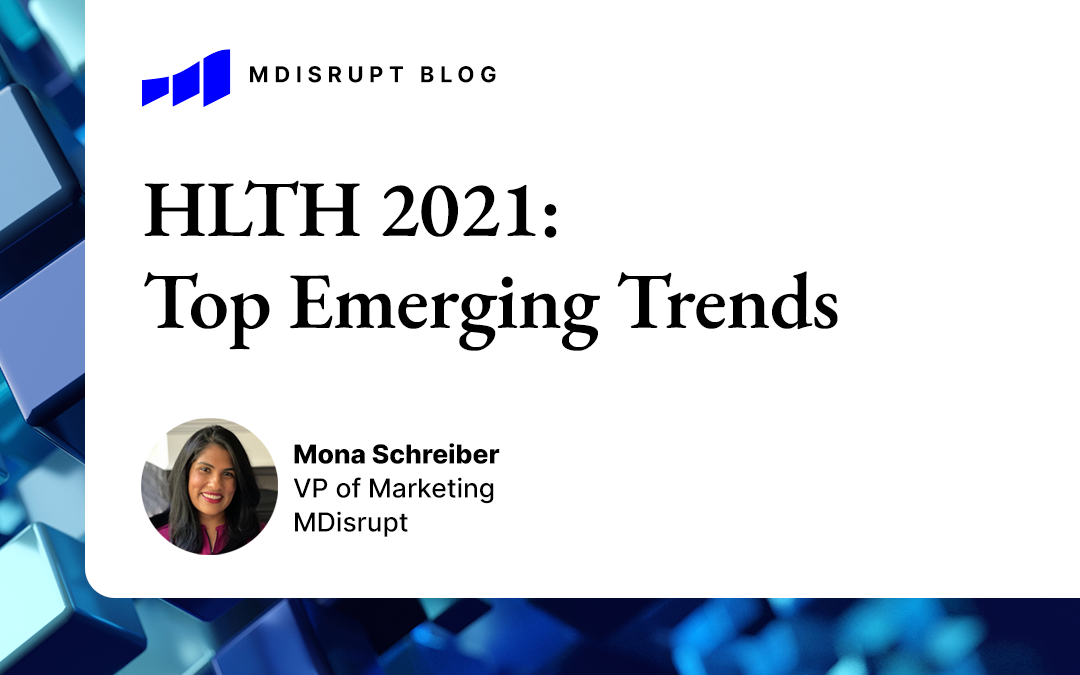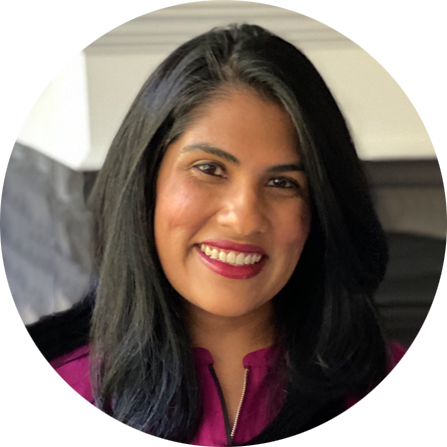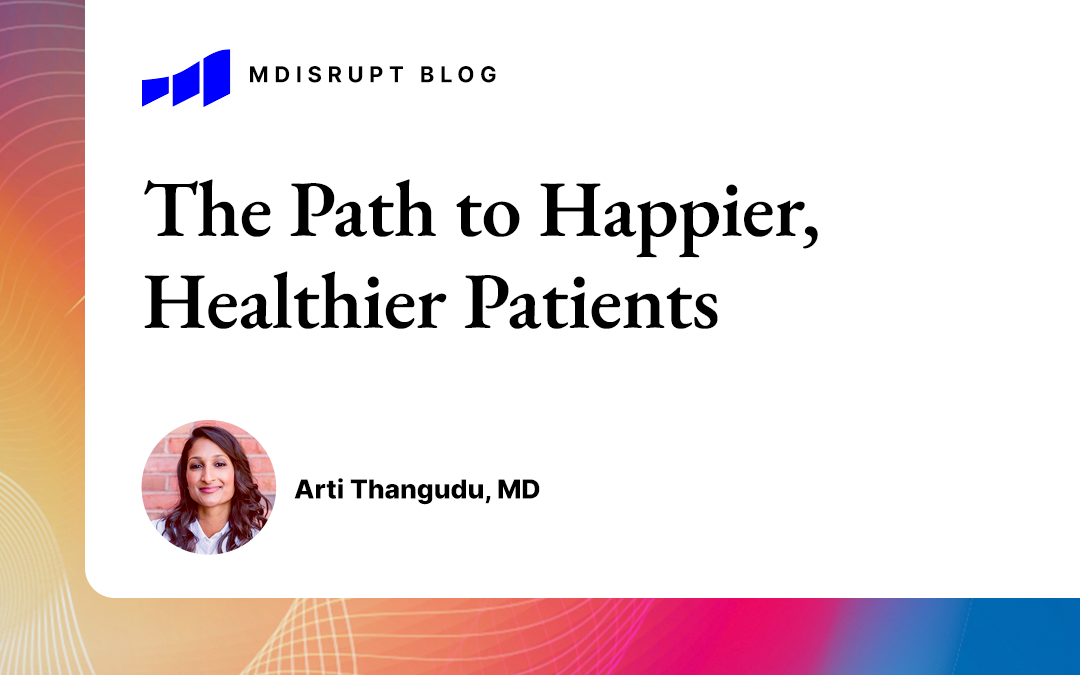Dr. Thangudu is a triple board-certified physician and endocrinology, diabetes, and thyroid specialist at Complete Medicine. She takes an evidence-based approach to care, focusing on the patient and their lifestyle, and uses a membership-based model of practice.
Putting the doctor-patient relationship first
MDisrupt: Tell us how you turned from practicing physician to physician-entrepreneur.
Arti Thangudu: I completed my endocrinology fellowship at the University of Pittsburgh Medical Center. When I graduated, I landed my dream job as an attending physician at the largest endocrinology private practice in the world. I had tons of patients and was seeing more than 30 a day.
I came into medicine to take care of people, and I chose endocrinology because it’s very relationship-based. But with 30-plus patients a day, that relationship is broken down. I thought, “Is this what I see myself doing for the rest of my life?”
In this fee-for-service model, doctors get rewarded for seeing more patients. The quality of care does not get rewarded. Better-quality care takes more time. And it’s not what the healthcare system wants us to do. The incentives are for us to see more patients and order more tests because that brings more money into the system.
I just wasn’t about that. And so I started my practice, Complete Medicine, which strives to break down the barriers to healthcare that I saw in the insurance-based model.
MDisrupt: What is your clinic trying to solve?
Arti Thangudu: The breakdown of the relationship between physician and patient and the lack of pricing transparency. For example, you go to a doctor and you have no idea how much you’re going to pay or how much your insurance is going to cover. And you get a bill two weeks later, another bill two months later, another bill three months later. And they’re all way higher than you expected. My practice is membership-based. Patients have unlimited visits. They can call me, they can text me, they can email me between visits. We can do virtual visits, we can do phone visits.
And our prices are transparent. The patient knows on day one how much they’re going to pay. We have negotiated cash pricing on labs and imaging. Patients can use insurance if they want to, but our prices are usually about one-tenth of what they would be with insurance. And there are no surprise bills.
The patients have better outcomes when they’re working with a physician they can trust and lean on and reach out to when they’re having trouble. So with my diabetes patients, we’ve had stellar outcomes—lots of patients coming off insulin, reducing their need for medication, just getting overall healthier, because good care delivers good outcomes.
Lifestyle medicine: caring for the whole patient
MDisrupt: What is lifestyle medicine?
Arti Thangudu: Lifestyle medicine integrates evidence-based nutrition, exercise, management of stress, sleep hygiene, cessation of bad habits. When I was in private practice, I noticed that people weren’t getting better. As an endocrinologist, I knew that nutrition and diabetes go hand in hand. During my endocrinology fellowship, nutritional training, for me, was 30 minutes with the dietician. That is insufficient for any doctor, especially somebody trying to call themselves a diabetes expert.
I realized that if I was going to create a more patient-centered practice, nutrition had to play a big part. And so I got certified in nutrition. And I also got board-certified in lifestyle medicine. These are all such important things that are bypassed by traditional medical training. When you can teach a patient why they should make lifestyle changes, and can be there to support them, they’re much more likely to make the changes and get themselves to better health.
A life-changing digital health tool
MDisrupt: How do you incorporate digital health tools into lifestyle medicine for your patients?
Arti Thangudu: The majority of my patients have diabetes. We use continuous glucose monitoring (CGM). And it has been fantastic. With these CGM devices, we can see the patient’s blood sugar in real time. So I can see exactly what their blood sugars have been doing all day, and they can too. And they don’t have to use a fingerstick anymore.
Studies have shown the more times a patient takes a blood sugar, the better control they have, but more importantly, the better quality of life they have. And so now with these CGM systems, they can input what they ate. You can see exactly how foods, exercise, and sleep affect them and the patient gets real-time feedback.
I have informally studied my own patients. This is not a randomized controlled study. But I did a small study on patients whose intervention was continuous glucose monitoring and lifestyle coaching. And those patients dropped their hemoglobin A1c by 2% after three months. That’s like a 50% reduction in their risk of complications from diabetes. It’s also cost-effective. Every 2% somebody decreases their A1c, it saves the healthcare system at least $4,000 per year—although it could be much more than that. And in that little study, 75% of my patients who were taking insulin were off of insulin by the end.
It’s a huge improvement in quality of life, health, and cost. Can you imagine using this little tool, and then you go from four shots of insulin a day to none, just by changing your lifestyle? That’s really motivating.
Making digital health better
MDisrupt: What are some of the biggest challenges in digital health?
Arti Thangudu: One is the evidence base. There are a lot of at-home lab tests, or testing that you can order online direct-to-consumer. They say they’re evidence-based, but then when somebody who’s a physician or scientist reads that evidence, they can recognize that it’s not at all evidence-based.
A lot of healthtech products are done in a silo and the physician is practicing in a silo. There’s no connection between the patient’s physician and the technology. And physicians don’t know how to interpret the data given to the patient from these tech solutions. If the physician can’t help interpret the data, it makes the patient lose trust.
If there’s a solution that wants to be really big, we need to get the patient’s physicians on board. Or the tech companies need to have a physician that they can send patients to who understands that tech. If we work together as physicians and a digital health team, we can make these products all the more robust and meaningful for patients. Digital health has so much potential—we can’t alienate doctors from it, because it’s the future. We, as physicians, have to get on board, and we have to make these digital tools usable by both patients and physicians. We can do so much together.
MDisrupt: What is your dream digital health tool for lifestyle medicine?
Arti Thangudu: If we could integrate the continuous glucose monitor plus our patients’ dietary and exercise logs, and then create an AI-sourced daily feedback model for them, supported by a health coach or nurse and into the clinical model—with the physician in that same team—that would be amazing for patients with diabetes. I know there are tools getting pretty close to that, but it seems like still there’s a bit of limitation with the physician being part of the team.
Doctors and patients as allies
MDisrupt: What will the doctor-patient relationship look like in 10 years?
Arti Thangudu: My hope is that we, as a community, recognize the value of that relationship. And we as patients and physicians fight to get it back, because doctors and patients are on the same side.
Patients feel frustrated. They’re rushed through their appointment and they blame the doctor because that’s the person in front of them. We need to take a step back and say, “Well, the system is making this doctor have to see 35 patients a day to keep their office open.”
If that same doctor could be in a situation where they saw 12 patients a day, would they be able to deliver better care? The answer, 99.9% of the time is, absolutely. I’ll tell you a story. I consult for a company that takes care of retired police and fire. I have more time to take care of these patients because it is not an insurance-based clinic.
I saw a patient for hypothyroidism and pre-diabetes. After I spent 20 minutes with her, taking a really thorough history, she said, “Doctor, I have to tell you something. You’ve seen me before.” And I was like, “Really? When?” And she said, “In your old clinic. It was really rushed—I must’ve spent three minutes with you. I never went back because the experience was so bad.” I was horrified! I said, “I hope I can make it up to you.” She said, “You already have. I recognize that you were put in a bad situation. Now I’m really excited to be on this journey with you.”
The same doctor can be put in a bad situation or a good situation, and that’s going to affect the care they provide. And so for things to improve in the future, the system really, really needs to change. We as doctors and patients need to recognize that the system isn’t necessarily helping us and maybe move outside of the system until the system decides to catch up. And really be our own advocates.










